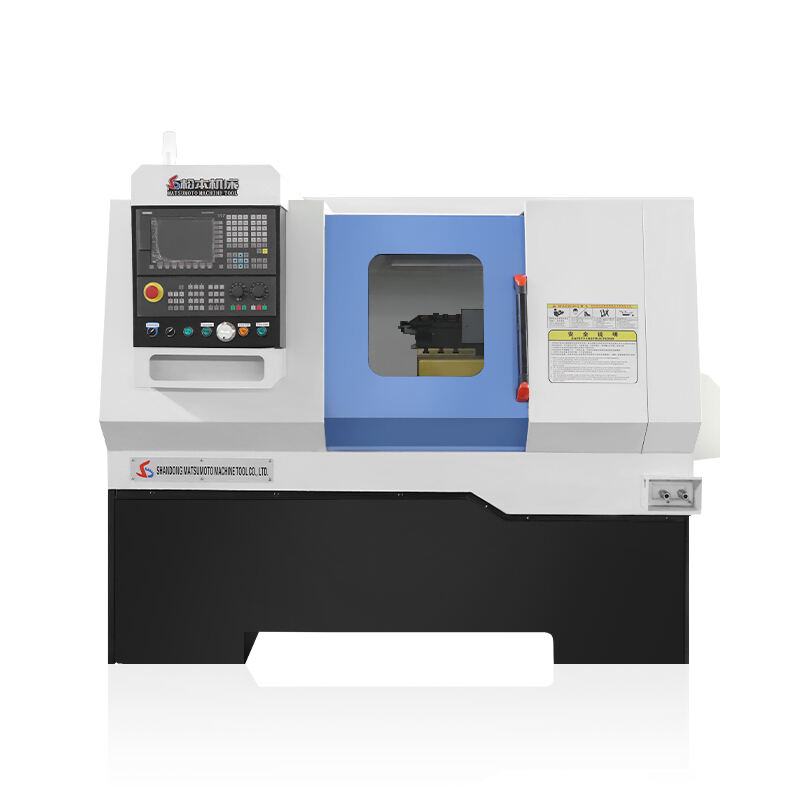CNC LATHE MACHINE tools were born to adapt to the mass automation production of modern industrial production, and the key word is automation. The flat bed CNC lathe is a simple CNC transformation from a regular lathe, and the automation considerations are not comprehensive. The inclined bed CNC lathe is developed and designed based on the principles of CNC machining, with strong targeting. In terms of machine layout, rigidity, accuracy, and chip removal ability, it has significantly improved compared to the flat bed CNC lathe.


The CNC lathes with inclined bed and flat bed and inclined guide rails mainly have differences in layout, rigidity, overall stability and machining accuracy:
1. Layout comparison
The two guide rails of the flat bed CNC lathe are parallel to the ground plane. The two guide rails of the inclined bed CNC lathe intersect with the ground plane, forming a sloping surface with angles of 30 °, 45 °, 60 °, and 75 °.
From the side view of the machine tool, the bed of a flat bed CNC lathe is square, while the bed of a diagonal bed CNC lathe is a right angled triangle. It is obvious that, with the same guide rail width, the X-direction drag plate of the inclined bed is longer than that of the flat bed, and the practical significance of its application in lathes is that it can arrange more tool positions.
2. Degree of rigidity
The cross-sectional area of the inclined bed CNC lathe is larger than that of the same specification flat bed, which means it has stronger resistance to bending and torsion. The cutting tool of the inclined bed CNC lathe cuts downwards from the inclined top of the workpiece, and the cutting force is basically consistent with the direction of the workpiece's gravity, so the spindle runs relatively smoothly and is less likely to cause cutting vibration. On the other hand, the cutting force generated by the cutting tool and the workpiece on the flat bed CNC lathe is 90 ° with the workpiece's gravity during cutting, which can easily cause vibration.
3. Overall stability
The inclined bed body has two advantages: the guide rail does not have to bear all the force, and the 45 or 30 ° guide rail is not easy to leave iron chips. When moving at high speed, the guide rail will not be scratched by iron chips. Moreover, the force surface has an angle, which ensures the stability of the machine tool under the same material and force conditions. Moreover, inclined bed bodies are generally cast as a whole, with relatively higher toughness.
The transmission screw of a CNC lathe is a high-precision ball screw, and the transmission clearance between the screw and the nut is very small, but it does not mean there is no clearance. As long as there is clearance, when the screw moves in one direction and then drives in the opposite direction, it is inevitable to produce reverse clearance. The presence of reverse clearance will affect the repeated positioning accuracy of the CNC lathe, thereby affecting the machining accuracy. The layout of the inclined bed CNC lathe can directly affect the clearance of the X-direction ball screw, and gravity directly acts on the axial direction of the screw, making the reverse clearance during transmission almost zero. The X-direction screw of the flat bed CNC lathe is not affected by axial gravity, and the gap cannot be directly eliminated. This is the inherent precision advantage that design brings to inclined bed CNC lathes.
 Hot News
Hot News2025-01-04
2024-12-20
2024-08-19
2024-10-28
2024-09-11
2025-01-30